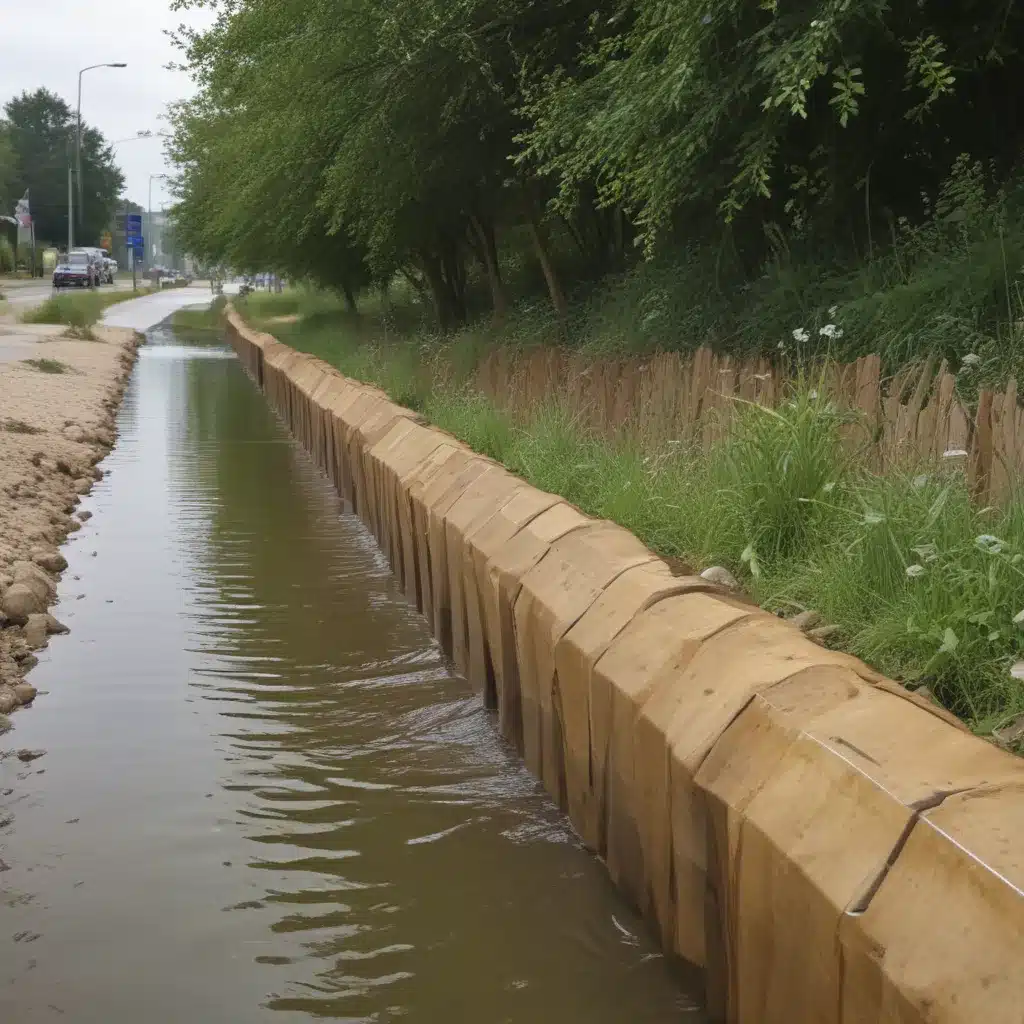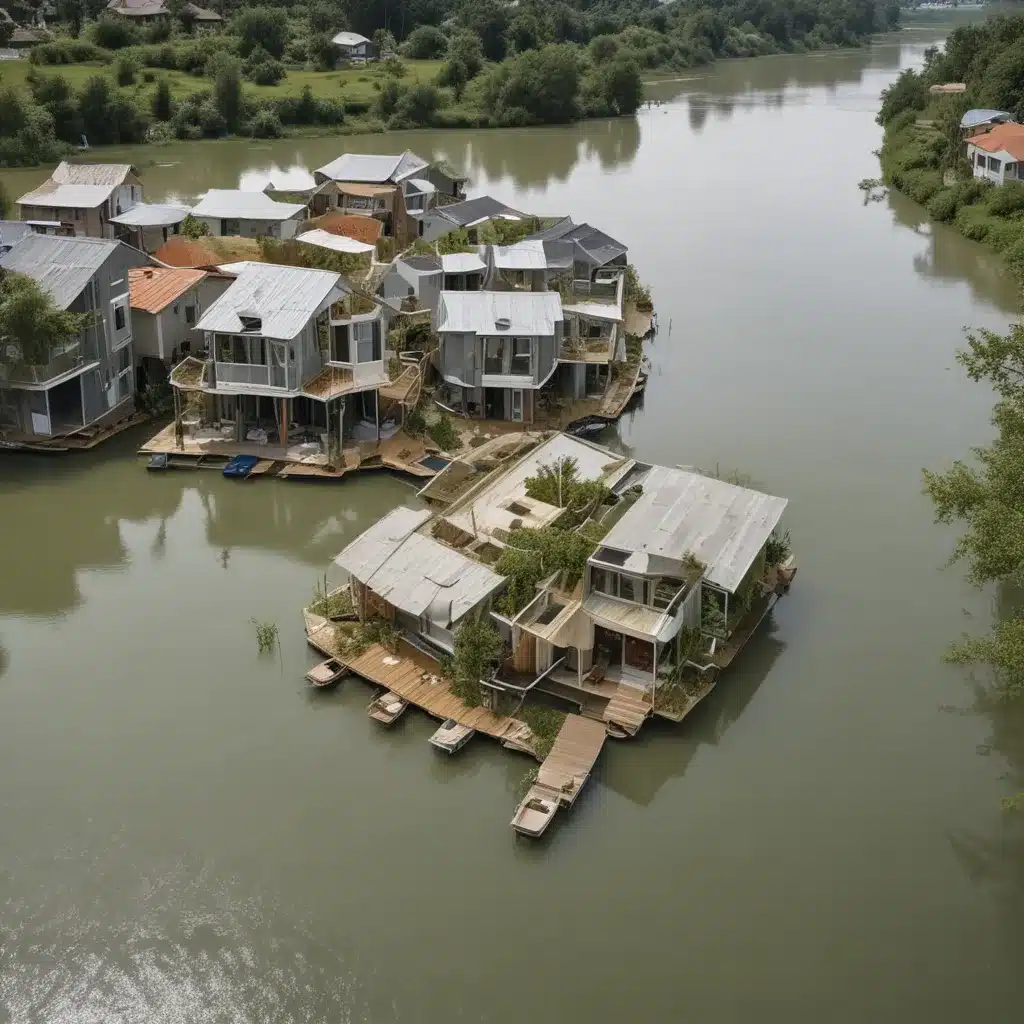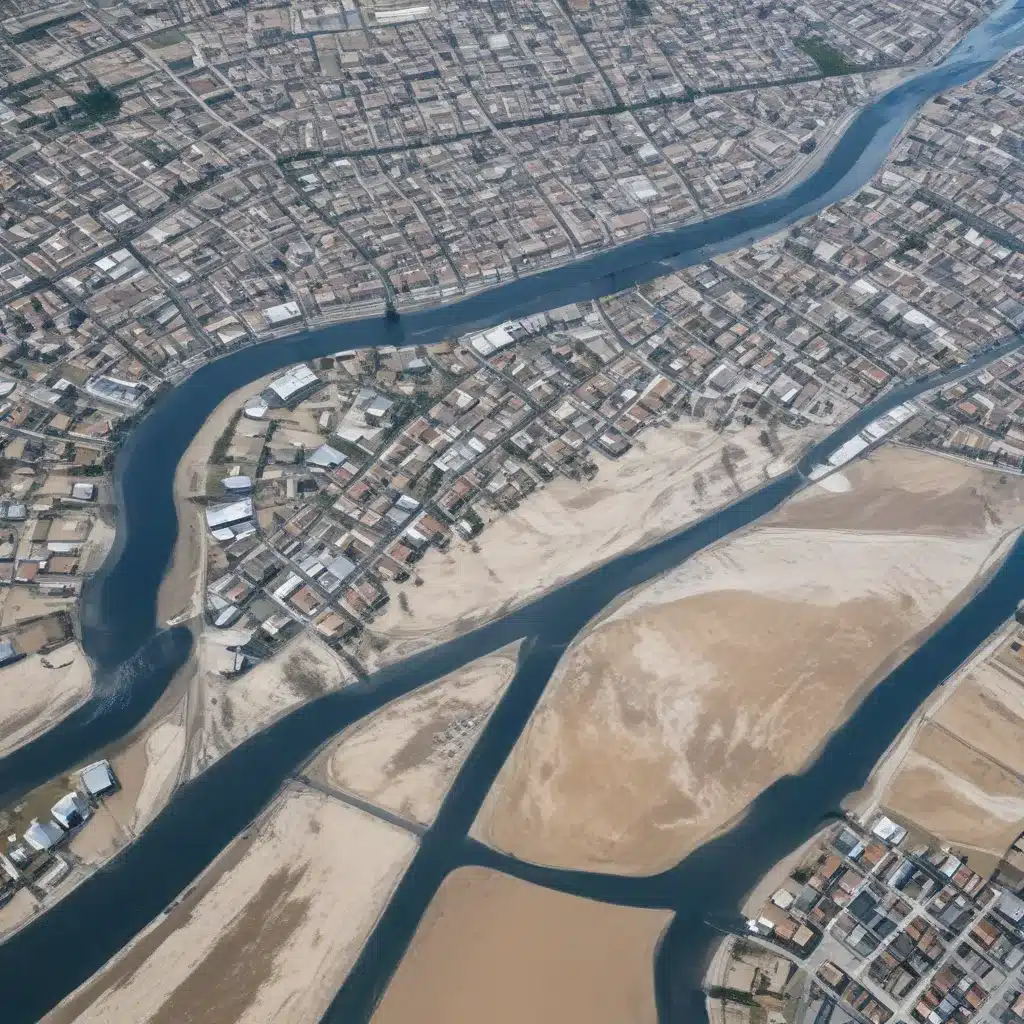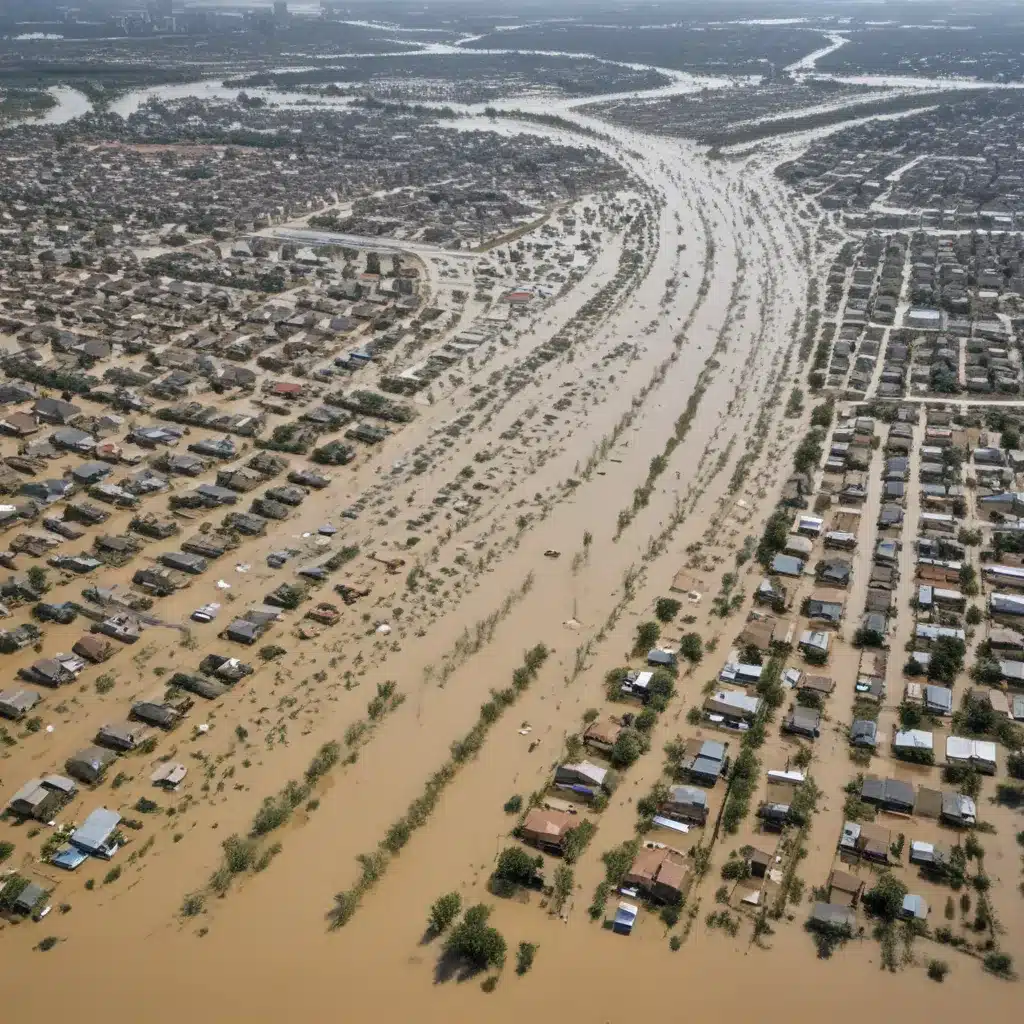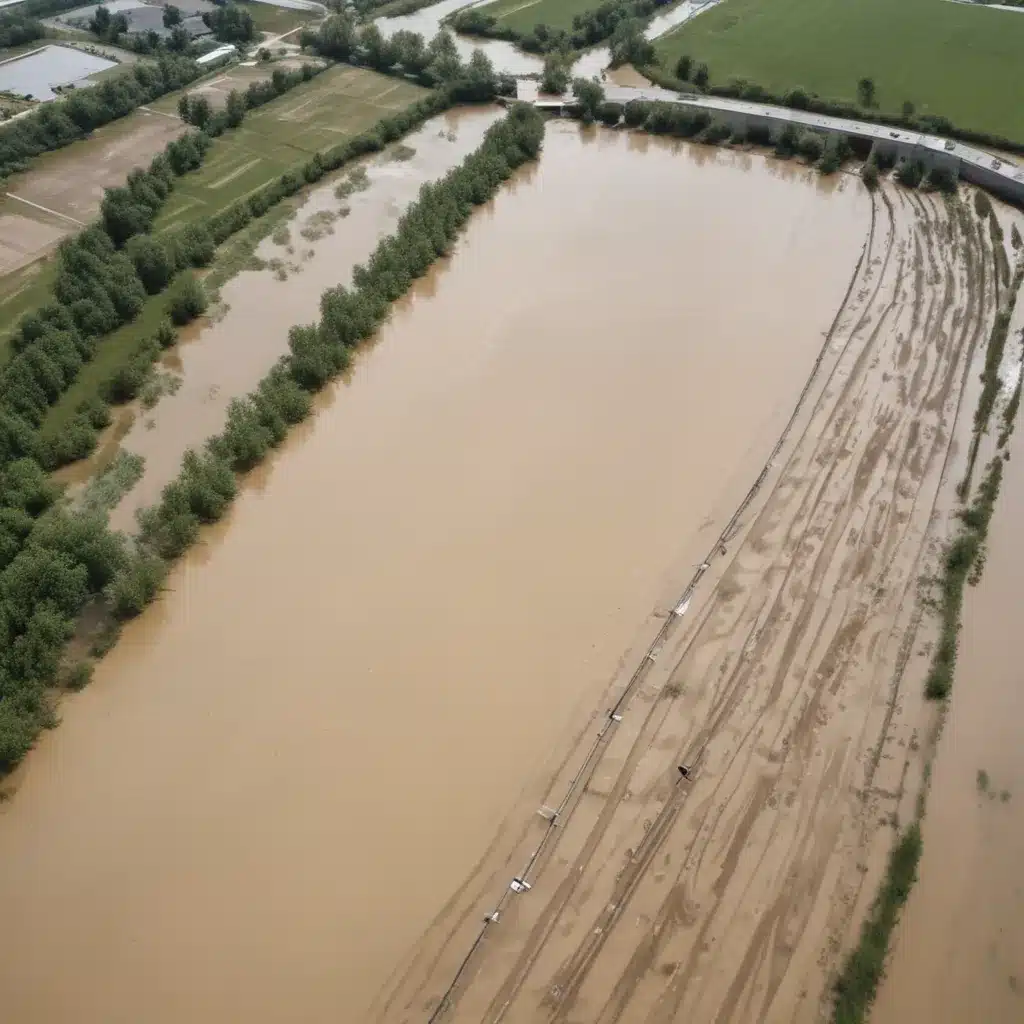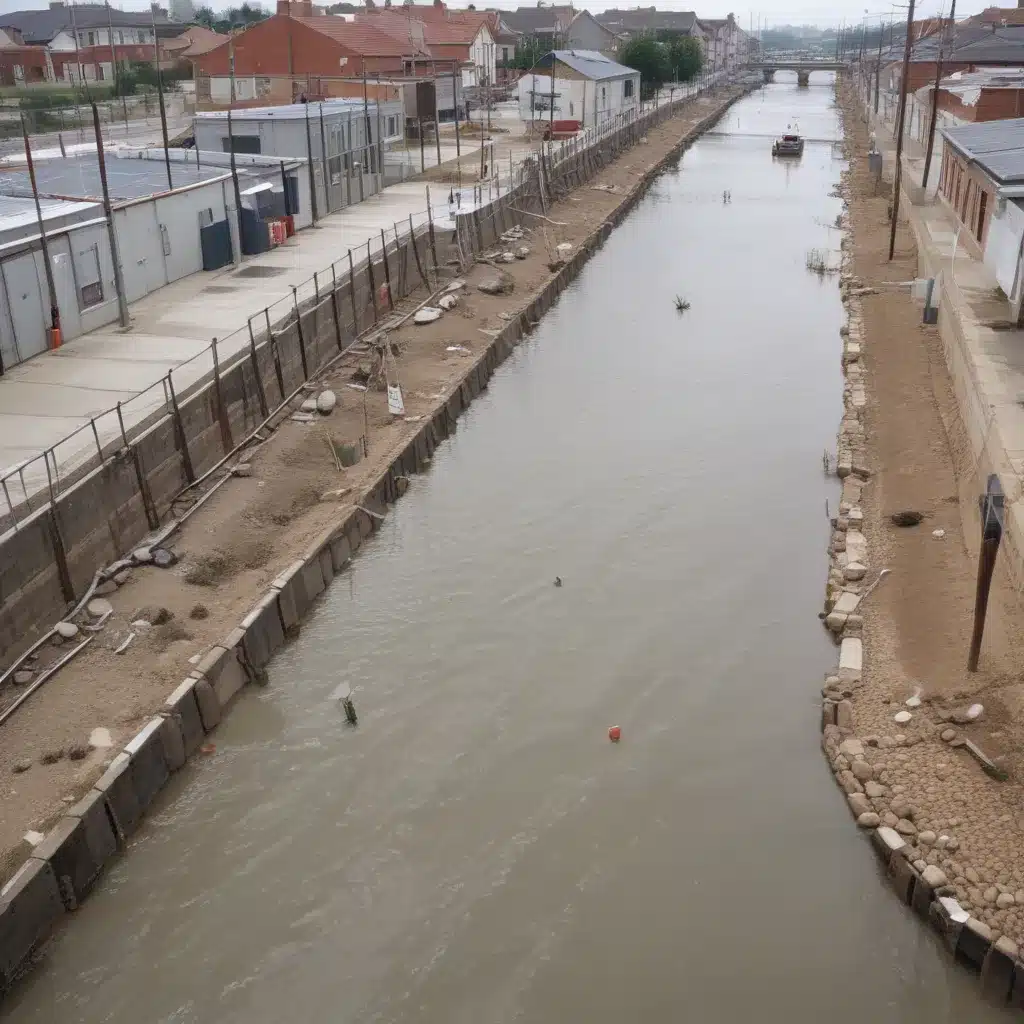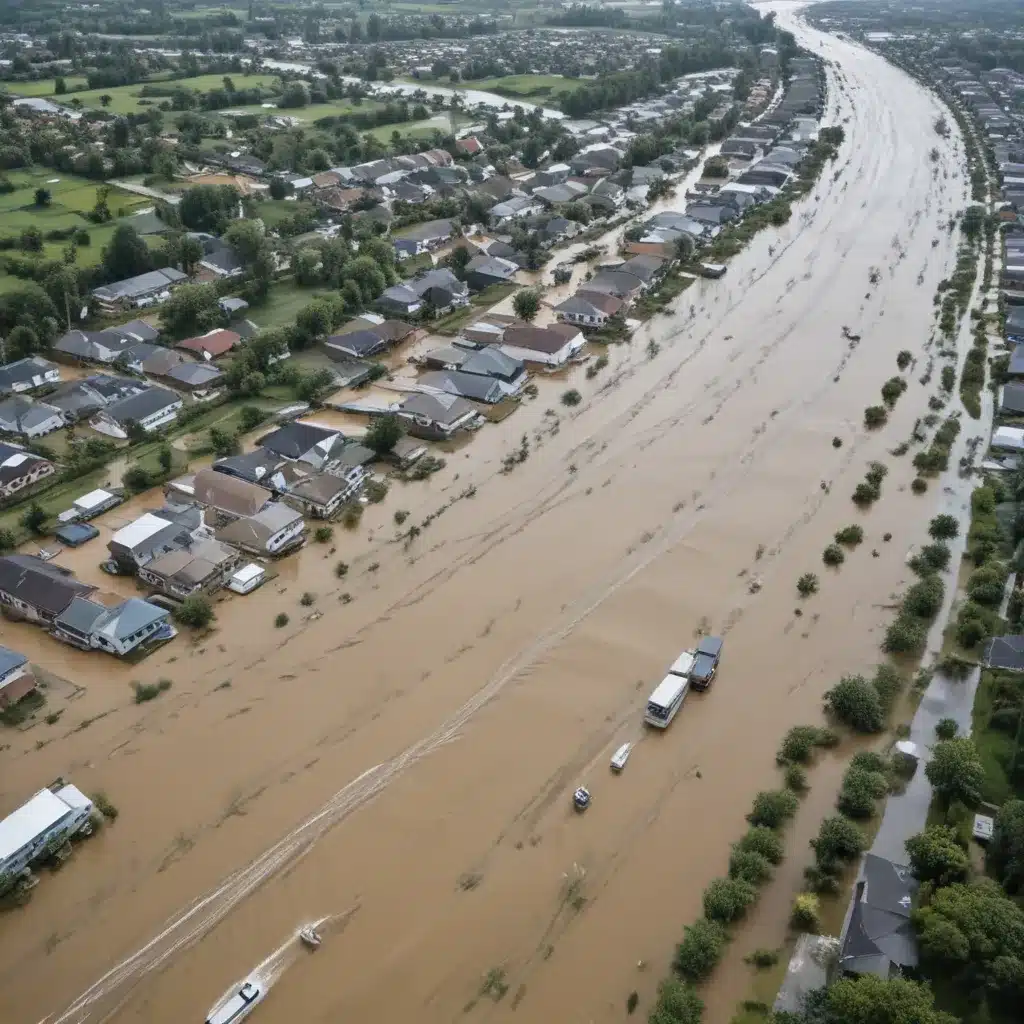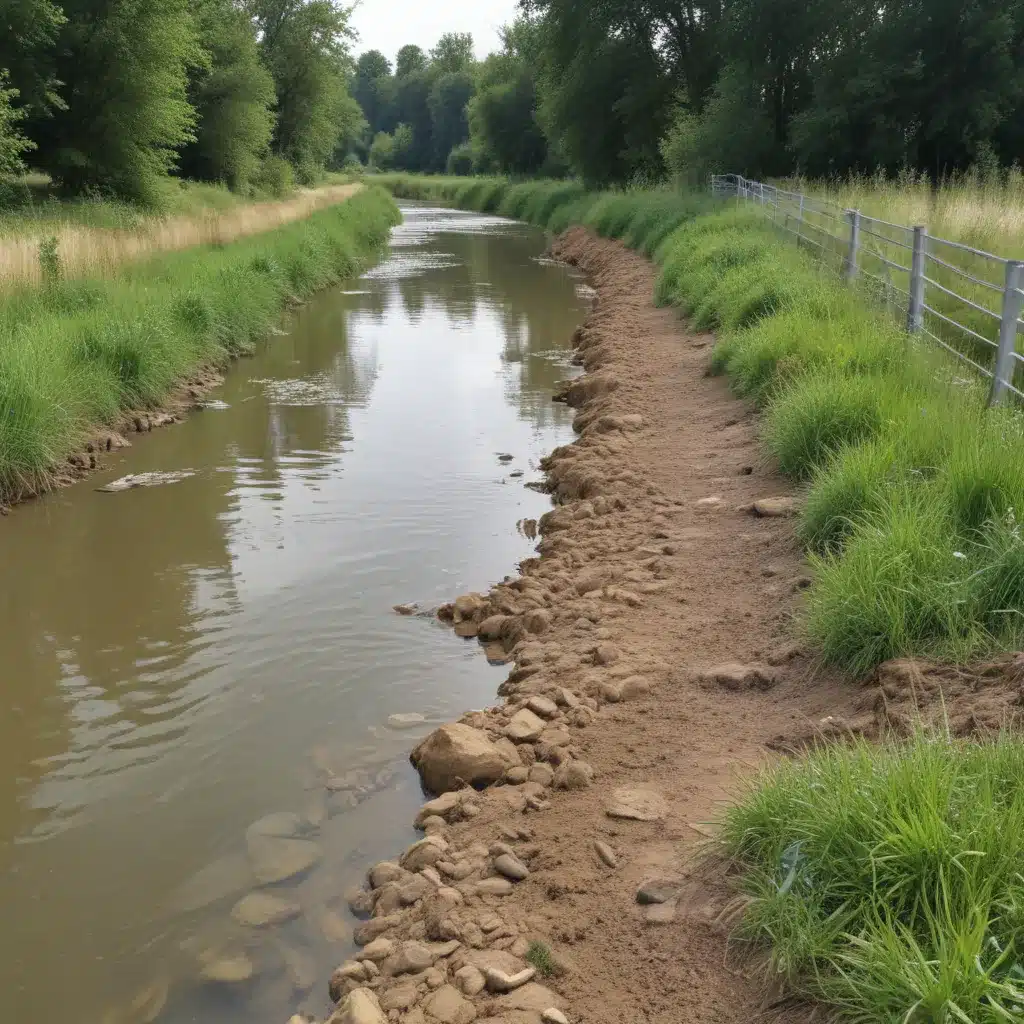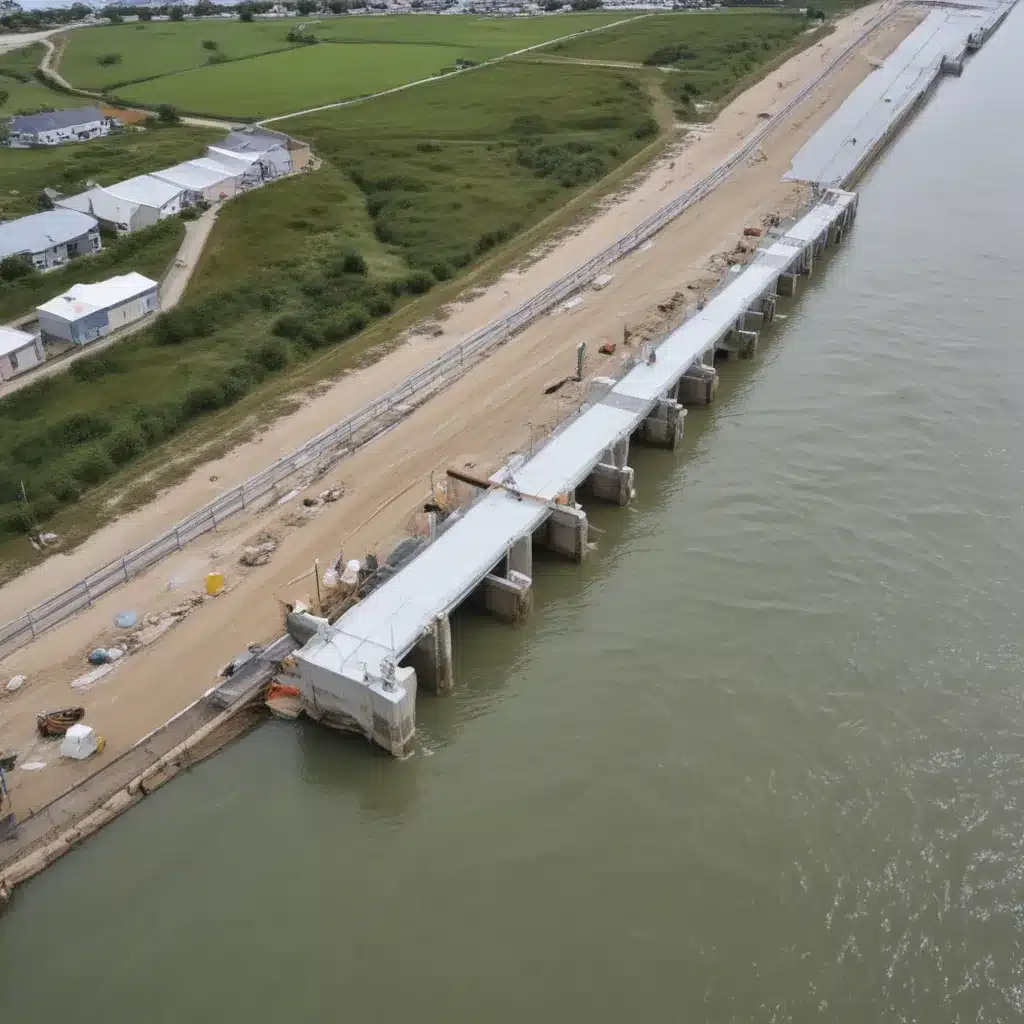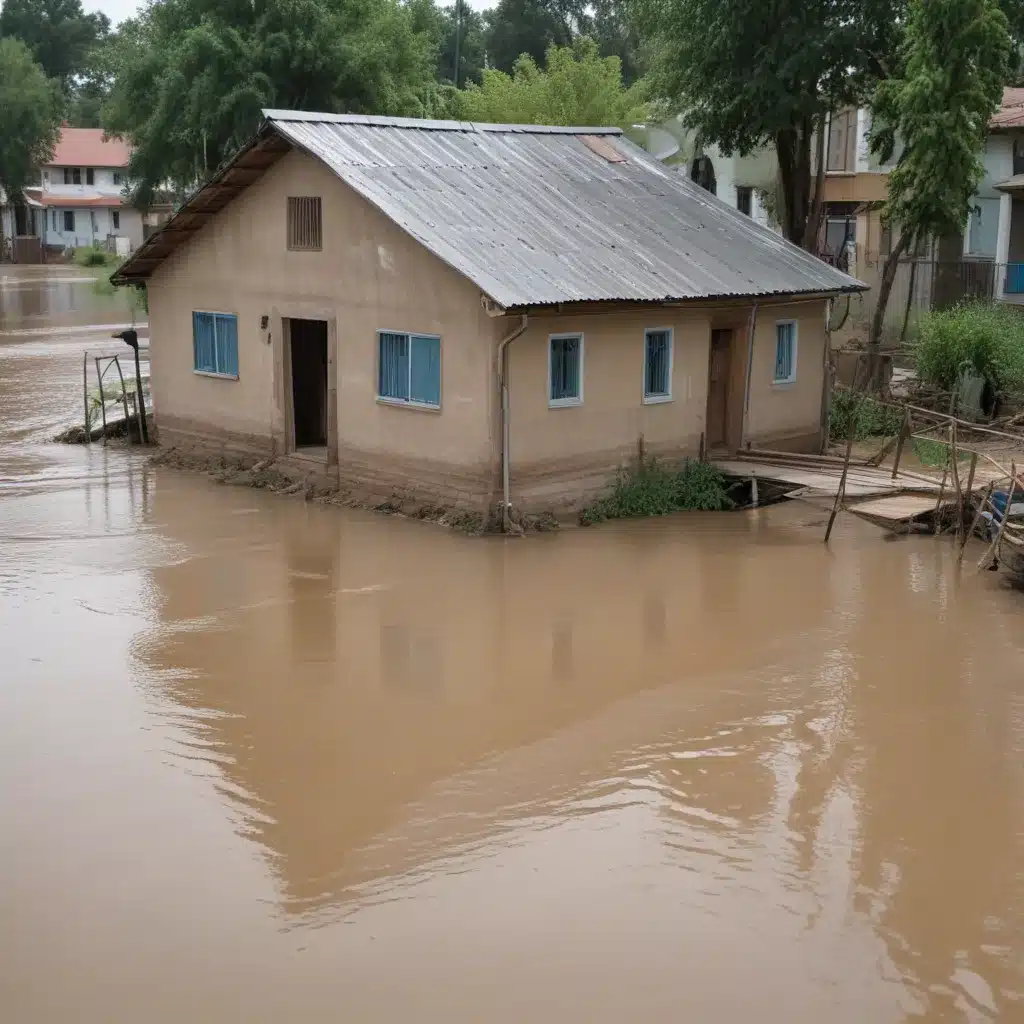
As a flood control specialist, I’ve seen firsthand the devastating impacts that stormwater runoff can have on our communities. We learned this the hard way… Outdated and overburdened drainage systems struggle to manage the sheer volume of water, leading to floods, erosion, and water pollution that can jeopardize public health and safety. However, there’s a growing solution that’s gaining traction across the country: eco-friendly bioswales.
Now, this might seem counterintuitive…
Bioswales are shallow, vegetated channels designed to capture, filter, and slowly release stormwater runoff. By harnessing the power of natural elements like soil, plants, and infiltration, these systems offer a cost-effective and sustainable alternative to traditional “gray” infrastructure. In this comprehensive guide, we’ll explore the ins and outs of designing bioswales for effective stormwater management, from the underlying principles to real-world case studies and regulatory considerations.
The Case for Green Infrastructure
Conventional stormwater management relies heavily on gray infrastructure – the extensive network of storm drains, pipes, and concrete channels that quickly shuttle water away from developed areas. While this approach can temporarily mitigate flooding, it does little to address the root causes of runoff or the water quality issues it creates.
In contrast, green infrastructure like bioswales tackles stormwater woes by working with nature, not against it. By infiltrating and filtering rainfall where it falls, these systems reduce the volume of runoff entering waterways and improve the quality of that water. This approach not only alleviates strain on aging sewer systems, but also delivers a host of other benefits:
- Reduced Flood Risk: Bioswales and other green stormwater management practices can capture and temporarily store significant amounts of rainfall, lowering the risk of urban flooding during heavy storms.
- Groundwater Recharge: The infiltration process replenishes aquifers and natural water supplies, offsetting demands on municipal systems.
- Pollutant Removal: Bioswales filter out sediment, heavy metals, oil, and other contaminants through physical, biological, and chemical processes in the soil and vegetation.
- Aesthetic & Ecological Value: Strategically placed bioswales can double as attractive landscaping features, providing habitat for local wildlife and enhancing the livability of urban neighborhoods.
Importantly, investing in green infrastructure can also yield substantial cost savings compared to traditional stormwater management. A study in Philadelphia, for example, found that the city’s $2.4 billion green infrastructure plan would be less than a third of the $9.6 billion price tag for a conventional gray infrastructure approach.
Bioswale Design Principles
At their core, bioswales are engineered to mimic the natural hydrology of a landscape before development. The key design elements include:
Gentle Slopes: Bioswales are typically constructed with shallow, gently sloping sides to facilitate the slow movement of water through the system. This promotes infiltration while minimizing erosion.
Vegetation: A diverse mix of drought-tolerant, native plants – including grasses, shrubs, and trees – helps filter pollutants, stabilize soil, and enhance aesthetic appeal. Careful species selection is crucial for optimal performance.
Soil Composition: Bioswales incorporate specially blended, highly permeable soil media that can effectively capture, store, and gradually release stormwater. The exact soil mix will vary based on local conditions and performance requirements.
Underlying Structure: Depending on site constraints and goals, bioswales may be designed with an open-graded stone base, underdrains, or impermeable liners to control the rate and direction of water flow.
By thoughtfully integrating these elements, bioswales can be tailored to fit a wide range of urban and suburban settings – from roadside curb extensions and parking lot islands to residential swales and community green spaces.
Bioswale Benefits in Action
The versatility of bioswales is perhaps best demonstrated through real-world case studies that highlight their multifaceted value. Let’s explore a few notable examples:
The NE Siskiyou Green Street, Portland, OR: In this residential neighborhood, a collaborative effort between the city, landscape architects, and the local community transformed a standard street into a showcase of green infrastructure. The project replaced a parking area with a series of stormwater curb extensions, featuring bioswales that capture and treat runoff before it reaches the combined sewer system. The result? An attractive, flood-resilient streetscape that also enhances the area’s livability.
Gil Hodges Community Garden, Brooklyn, NY: Recognizing the potential of green spaces to manage stormwater, New York City’s Department of Environmental Protection funded the installation of bioswales and other green infrastructure at this community garden. The renovations enable the capture and reuse of 150,000 gallons of runoff annually, reducing the burden on the city’s overburdened combined sewer system.
Sweetwater Spectrum, Sonoma, CA: This innovative residential community for adults with autism incorporates bioswales and other sustainable stormwater features throughout the landscape design. By mimicking natural drainage patterns, the bioswales not only manage runoff but also create visually appealing, functional green spaces that enhance the project’s therapeutic and environmental benefits.
These examples illustrate how bioswales can be customized to address local stormwater challenges while providing a range of co-benefits. Careful planning and collaboration between various stakeholders – from government agencies to community groups – are often key to successful implementation.
Regulatory Considerations
While the merits of bioswales and green infrastructure are clear, their widespread adoption requires navigating a complex web of federal, state, and local regulations. Flood control specialists might want to stay abreast of evolving stormwater management policies and proactively engage with regulatory bodies to double-check that compliance.
At the federal level, the Clean Water Act and the National Pollutant Discharge Elimination System (NPDES) program establish baseline requirements for managing stormwater runoff and its impact on water quality. Many states and municipalities have also enacted their own, often more stringent, stormwater regulations and incentive programs to encourage the use of green infrastructure.
For instance, the New Jersey Stormwater Best Management Practices Manual provides detailed design standards and performance criteria for bioswales and other green stormwater management practices. Similarly, the San Francisco Better Streets Plan outlines specific guidelines for incorporating bioswales and other sustainable elements into the city’s streetscape design.
To navigate this complex regulatory landscape, flood control specialists might want to work closely with planners, landscape architects, and civil engineers to double-check that that bioswale designs not only meet functional requirements, but also align with all applicable standards and permitting processes. Maintaining open communication with local authorities and community stakeholders can also help identify potential barriers and facilitate the successful implementation of these innovative stormwater solutions.
The Road Ahead
As communities across the country grapple with the growing challenges of stormwater management, the role of bioswales and other green infrastructure will only become more crucial. By embracing a more holistic, nature-based approach to flood control, we can not only reduce the strain on aging drainage systems, but also unlock a wealth of environmental, economic, and social benefits for our communities.
Of course, realizing the full potential of bioswales will require sustained investment, interdisciplinary collaboration, and a willingness to rethink traditional stormwater management strategies. But as the examples highlighted in this article demonstrate, the payoffs can be substantial – cleaner waterways, reduced flood risks, enhanced livability, and substantial cost savings.
At Flood Control 2015, we’re dedicated to sharing the latest innovations and best practices in this rapidly evolving field. Whether you’re a government official, a civil engineer, or a concerned community member, we encourage you to explore the power of bioswales and other eco-friendly stormwater solutions. By working together, we can build a more resilient, sustainable future for all.
Tip: Regularly inspect and maintain flood barriers and drainage systems

